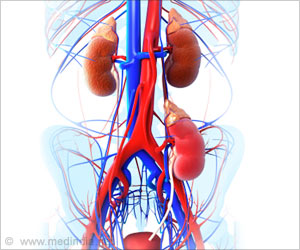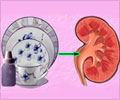The United States Renal Data System data emphasizes the low awareness of kidney disease as well as the low rates of screening for the condition.

‘United States Renal Data System has revealed the annual data report which stresses about the positive trends among dialysis and kidney transplants and also highlights increasing medical costs associated with kidney disease.’





Highlights from the report include: - Fewer deaths were reported among dialysis and kidney transplant patients in 2013, dropping by 28 percent and 40 percent, respectively, since 1996.
- Prevalence of end-stage kidney disease--the last stage of chronic kidney disease when the kidneys can no longer remove waste and excess water from the body, and dialysis or kidney transplantation is necessary for survival-- continued to rise. The size of the dialysis population increased 4 percent in 2013, reaching 466,607, and is now 63.2 percent larger than in 2000.
- Home dialysis--when patients have the ability to clear excess fluid and waste from the kidneys by using a dialysis machine in the privacy of their own home--use is 52 percent higher than a decade ago.
- The active waiting list for kidney transplants was 2.7 times larger than the supply of donor kidneys, with 17,600 kidney transplants performed in 2013.
While the report highlights several positive trends, Saran mentions it's important to also consider areas where improvement is needed.
"Several lifestyle-related chronic health conditions, such as diabetes, high blood pressure and other cardiovascular diseases can contribute to kidney disease. Monitoring and early treatment of those conditions are key to prevention, and can help patients keep their kidney disease under control," Saran says.
With patients affected by the disease living longer, the report also highlights increasing medical costs associated with kidney disease.
Advertisement
Encouragingly, use of home dialysis has increased in recent years. Home dialysis offers patients more flexibility and convenience, allowing for an improved quality of life. Home dialysis use overall in 2013 was 52 percent higher than a decade ago.
Advertisement
"Awareness of this silent, but deadly killer may help prevent those with early-stage kidney disease from progressing. Learning more about risk factors for the disease and early diagnosis are of vital importance as symptoms of kidney disease develop much later," Saran says.
Source-Eurekalert















